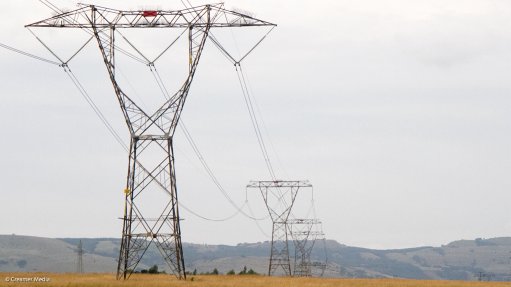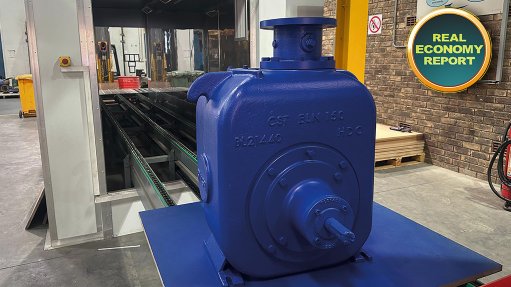When To Replace, And When To Refurbish
This article has been supplied.
Is it better to replace or refurbish an overhead crane reaching the end of its life?
At least one South African firm reckons that there are advantages to both options, and Condra, a specialist in new crane manufacture as well as crane refurbishment, believes that the choice should be very carefully considered.
According to Marc Kleiner, the company’s managing director, refurbishment allows the customer to immediately realise a cost saving over buying new, and carries the additional advantage of providing an as-new machine already familiar to his operators, avoiding any need for re-training. Production can continue as before, with no change to established procedure.
Buying new, on the other hand, offers the advantages of lower operating costs quickly realised, a reduction in projected overall lifetime cost, and more efficient operation as a result of newer cranes’ increased speeds, lower weights and lower electricity consumption. According to Kleiner, hoists today are as much as 50% lighter than they were 30 years ago, and the consequent reduction in crane weight also reduces the rate of wear on the overall factory structure.
Signs that an overhead crane will soon need either refurbishing or replacing include brittle electrical cable loop systems, failing contactors, extreme wheel wear, structural cracks and a general increase in maintenance costs.
If the customer should decide to refurbish, then the procedure generally comprises a dismantling of the crane followed by inspection of all brakes and mechanicals, a change of bearings, and an assessment of the overall crane structure using MPI to inspect critical sections for rust. Crane girders and crabs are also re-aligned, and the girders checked to ensure that they remain true. All main components are then shot-blasted, reassembled and painted.
Condra refurbishes not only its own cranes, but also competitors’ machines.
Kleiner explained that competitor crane refurbishment is becoming increasingly popular because it allows the circumvention of delays caused by long component lead times of up to 18 months. Such delays are common among European companies because they have to import their spares.
As an example, Kleiner pointed to a 20-ton crane originally manufactured by a German company but soon to be refurbished at Condra’s Germiston factory, which will either re-engineer or re-manufacture any parts that are either no longer available or which will take too long to import.
Recent refurbishments of Condra’s own overhead cranes have included an 80-ton machine for Sishen, and two hoists and a 25-ton, 20-metre-span crane for Implats, the latter involving conversion of the existing electrical configuration from 525V to 400V. The refurbishment of Sishen’s 80‑tonner was more routine, with all bearings, ropes and brake linings being replaced, and the usual checks and inspections carried out before the crane was re-painted and delivered back to the mine.
Besides its own machines and competitors’ cranes, Condra also refurbishes overhead machines originally supplied by companies that have recently closed.
Kleiner explained that the benefit Condra gains during refurbishing, whether one of its own machines or one from a rival firm, is that its engineers can ascertain from a technical perspective precisely how the machine has been performing.
“If the crane is our own, then we get the chance to look inside it, examine wear rates and make projections of expected component life,” he said.
“One thing we’re seeing is that Condra’s component life expectancy presently far exceeds the international norm, and we will be reducing the size of some of the components for our 2025 models to improve efficiencies and reduce power consumption, especially within the gearboxes.”
Kleiner explained that overhead cranes are sent back to the factory for refurbishment anywhere between 15 years and 30 years after commissioning, depending on the operator’s maintenance policy and how hard the crane has been working.
He pointed out that Condra offers the option of changing both crane capacity and span during a refurbishment by fitting new hoists, changing the rope and modifying the gear reduction.
“Whatever the case, whether upgrade or refurbishment of a Condra crane or a competitor’s crane, or one from a company that has closed, we work closely with the client on a solution that will deliver back a fully reliable, fully refurbished machine that will work happily for many years into the future,” Kleiner said.
He pointed out that refurbishment is not always the better option, with the cost sometimes outstripping the benefits. Examples are when a crane is very old (35 years or more), or when a crane has been working in the open and rust has established itself inside the girders.
“So the customer first has to consider the estimated price difference between new and refurbished,” he said, “and then he has to weigh the extra cost of a new crane against the benefits of increased crane speed and consequent gains in productivity.
“To help him with this decision, we supply a range of solutions offering varying productivity gains, with alternative costs for each one.”
Kleiner said that customers were almost always offered the option during refurbishment of technically upgrading their machine. He explained that the productivity of cranes of 20 years or older can usually be improved through increased speed and easier acceleration and deceleration, all achieved through the installation of variable frequency drives. Enhancements can also be fitted, such as a digital read-out on the load, or remote control if the machine does not already have this option.
“So with refurbishment we can give back to the customer a crane that is much faster and much lighter than it was before, and we can fit a frequency drive on the long travel to speed it up, and we can incorporate in the refurbishment any kind of modern technology that he wants, including hoists of different capacity,” he said.
“We can also automate the crane during refurbishment, in which case we often improve the mechanicals to incorporate the new electrical equipment needed for automation.
“These options are offered across the board, from standard 2M workshop cranes to the higher performing machines such as Class 3 and Class 4.”
Kleiner said that the time needed to refurbish a standard workshop crane was approximately two weeks, while heavier-duty cranes need anything up to six weeks including time for re-painting.
All refurbishments carry a warranty of two years on machines originally manufactured by Condra, and one year for cranes made by a competitor.
Article Enquiry
Email Article
Save Article
Feedback
To advertise email advertising@creamermedia.co.za or click here
Comments
Press Office
Announcements
What's On
Subscribe to improve your user experience...
Option 1 (equivalent of R125 a month):
Receive a weekly copy of Creamer Media's Engineering News & Mining Weekly magazine
(print copy for those in South Africa and e-magazine for those outside of South Africa)
Receive daily email newsletters
Access to full search results
Access archive of magazine back copies
Access to Projects in Progress
Access to ONE Research Report of your choice in PDF format
Option 2 (equivalent of R375 a month):
All benefits from Option 1
PLUS
Access to Creamer Media's Research Channel Africa for ALL Research Reports, in PDF format, on various industrial and mining sectors
including Electricity; Water; Energy Transition; Hydrogen; Roads, Rail and Ports; Coal; Gold; Platinum; Battery Metals; etc.
Already a subscriber?
Forgotten your password?
Receive weekly copy of Creamer Media's Engineering News & Mining Weekly magazine (print copy for those in South Africa and e-magazine for those outside of South Africa)
➕
Recieve daily email newsletters
➕
Access to full search results
➕
Access archive of magazine back copies
➕
Access to Projects in Progress
➕
Access to ONE Research Report of your choice in PDF format
RESEARCH CHANNEL AFRICA
R4500 (equivalent of R375 a month)
SUBSCRIBEAll benefits from Option 1
➕
Access to Creamer Media's Research Channel Africa for ALL Research Reports on various industrial and mining sectors, in PDF format, including on:
Electricity
➕
Water
➕
Energy Transition
➕
Hydrogen
➕
Roads, Rail and Ports
➕
Coal
➕
Gold
➕
Platinum
➕
Battery Metals
➕
etc.
Receive all benefits from Option 1 or Option 2 delivered to numerous people at your company
➕
Multiple User names and Passwords for simultaneous log-ins
➕
Intranet integration access to all in your organisation

















